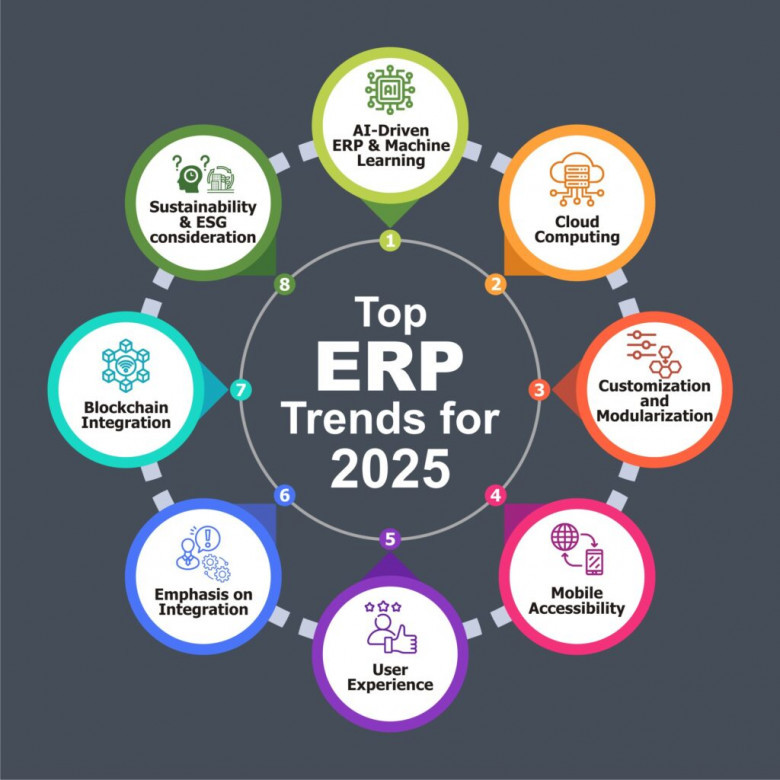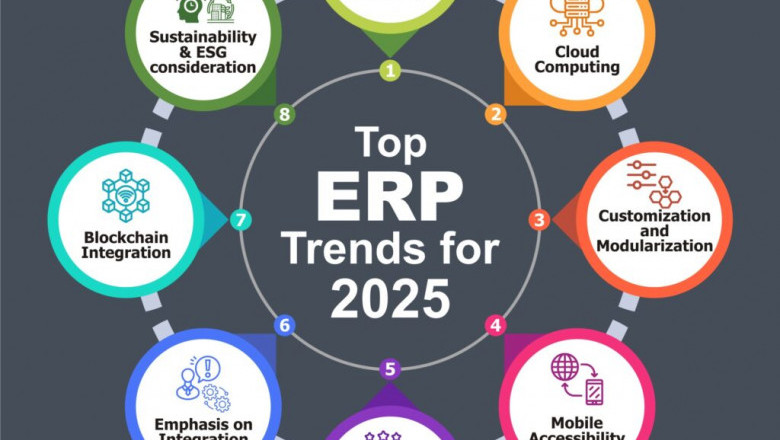views
In 2025, Enterprise Resource Planning (ERP) systems continue to evolve as the backbone of modern businesses. Gone are the days of monolithic ERP suites with limited flexibility. Today’s ERP solutions are dynamic, cloud-native, and integrated with business intelligence tools to help organizations become more agile, data-driven, and customer-centric.
With global competition intensifying and customer expectations rising, ERP systems must now offer more than just internal process management—they must enable innovation. Let’s explore the major ERP trends shaping enterprises in 2025 and how businesses can harness them for growth.
1. Cloud-First ERP Deployments
A key shift in 2025 is the widespread adoption of cloud-based ERP solutions. Businesses are moving away from on-premise systems in favor of Software-as-a-Service (SaaS) platforms like Oracle Cloud ERP, SAP S/4HANA Cloud, and Microsoft Dynamics 365. Cloud ERPs offer:
-
Lower capital expenditure
-
Seamless scalability
-
Regular updates and patches
-
Remote accessibility
Mid-sized enterprises especially benefit from reduced infrastructure costs and faster implementation timelines.
2. Industry-Specific ERP Solutions
One-size-fits-all ERP systems are being replaced by verticalized ERP solutions tailored to industries like manufacturing, healthcare, construction, and retail. These specialized systems come pre-configured with industry processes, compliance templates, and analytics dashboards, reducing the need for custom development.
For example, a manufacturing ERP might include modules for plant maintenance, supply chain visibility, and quality control out of the box.
3. Integration with Business Intelligence (BI) Tools
Modern ERP is no longer just about data entry—it’s about insights. In 2025, businesses are integrating ERP with BI tools like Power BI, Tableau, and Qlik to enable real-time reporting, advanced analytics, and predictive decision-making.
By merging financial, operational, and customer data, companies can forecast demand, identify bottlenecks, and optimize resources—all from a unified dashboard.
4. Mobile ERP for the Remote Workforce
With hybrid and remote work becoming permanent features of the corporate landscape, mobile ERP access has become essential. Employees can now manage inventory, approve invoices, track project status, or generate reports directly from their smartphones or tablets.
This level of mobility improves decision-making speed, collaboration, and productivity—especially for sales teams, project managers, and field technicians.
5. Low-Code/No-Code ERP Customization
The rise of low-code and no-code platforms has democratized ERP customization. Business users, with minimal programming knowledge, can now build workflows, design forms, and automate tasks directly within ERP systems.
This shift reduces IT dependency, accelerates change implementation, and aligns ERP more closely with evolving business needs.
6. Focus on Modular ERP Systems
Companies are moving away from bulky, all-in-one ERP suites to modular ERP systems. This allows businesses to adopt and pay for only the modules they need—be it HR, finance, CRM, or supply chain—and add more as they grow.
Modular architecture also makes it easier to integrate with third-party applications and upgrade systems without disrupting core operations.
7. Data Governance and Compliance-Ready Features
In an era of data privacy regulations like GDPR and India’s Digital Personal Data Protection Act, modern ERP systems are designed with built-in compliance features. This includes access control, audit trails, and data residency options.
Data governance modules help ensure that sensitive customer and financial information is managed responsibly and in line with legal requirements.
8. ERP for ESG and Sustainability Reporting
Sustainability is no longer a CSR checkbox—it’s a strategic priority. ERP systems now include features for Environmental, Social, and Governance (ESG) reporting. These tools track energy consumption, carbon emissions, and supplier ethics, allowing companies to monitor and report sustainability metrics directly from the ERP platform.
How to Choose the Right ERP in 2025
With so many options, selecting the right ERP platform can be challenging. Businesses should consider:
-
Scalability – Can it grow with you?
-
Integration Capabilities – Does it work with your existing tools?
-
User Experience – Is it intuitive and mobile-friendly?
-
Support and Community – Does it offer strong vendor support?
-
Total Cost of Ownership – Include hidden costs like training and migration
Engaging an experienced software consulting partner is often the best way to ensure successful ERP selection and implementation.
Final Thoughts
ERP systems in 2025 are more agile, intelligent, and business-aligned than ever. Whether you’re a startup looking for scalability or an enterprise streamlining global operations, modern ERP can transform how your organization operates.
With proper planning, integration, and user adoption, ERP can be a powerful enabler of operational excellence and long-term growth.
About Hexadecimal Software
Hexadecimal Software specializes in ERP implementation, integration, and customization across industries. Whether you’re transitioning to a cloud ERP or need help with low-code workflow automation, our team ensures a smooth digital transformation tailored to your business needs. Our proven methodologies help organizations unlock the full potential of their ERP investments.
Explore More on HexaHome Blog
Discover how technology trends are impacting industries like real estate, infrastructure, and smart cities. Visit the HexaHome Blog for expert insights into IT adoption, sustainability practices, and digital-first strategies shaping modern business.















Comments
0 comment